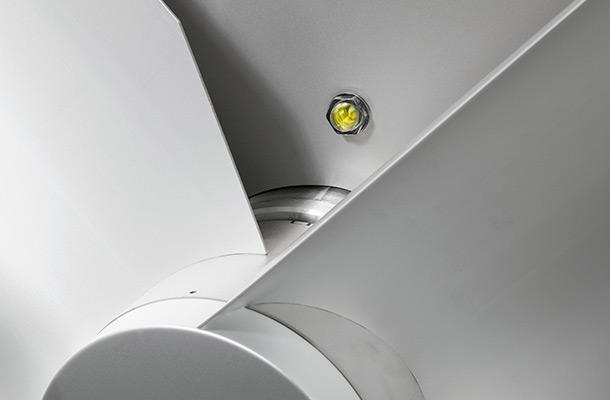Energy saving in setters
Tags: Incubation | Whitepaper
, February 18 2016

In modern hatcheries, electricity consumption by incubators can account for 35-50% of the hatchery’s total electricity costs. Electric motors in both setters and hatchers are the greatest consumers of electricity.
A frequency controller, or ‘Energy Saving Module’ (ESM), can be installed in the setter to adjust fan speeds. The ESM allows the hatchery manager to design single stage incubation programs for savings of 24-30% in energy consumption by the electrical motors, without adversely affecting hatchability and uniformity.
In most setters the fan has two functions: (1) air intake and (2) recirculation of air over the eggs and between trolleys. Air intake functionality is part of the ventilation system, controlled either by the air inlet valves (dampers) fixed set points, or by automatically controlling dampers based on RH and CO2 set points. Maximum ventilation capacity (m3/h) or air intake depends on fan speed and decreases at reduced fan speeds when energy saving programs are implemented.
The recirculation function of the fan directs airflow over the eggs, thereby controlling the uniformity of embryo temperatures. The shape and speed of the fan determine airspeed (m/s) and uniformity of air flow.
Both air intake and recirculation depend on the speed of the fan (revolutions/min). Consequently lowering fan speeds reduces air flow over the eggs and decreases maximum ventilation capacity. Reducing fan speed to save energy therefore requires care, since embryo temperature (and growth) depend on temperature set points, air flow and ventilation rates (French, 1997).
In the first 3-5 days of incubation, sufficient heat must be transferred to the eggs to compensate for evaporative cooling. It is therefore not advised that fan speed is reduced during these initial days of incubation. After day 13, maximum fan speeds support optimum development and prevent poor chick quality by overheating. From days 12-13 the embryos metabolize yolk lipids at high rates to support rapid growth. This increased yolk consumption requires sufficient oxygen and therefore increased ventilation. Furthermore, increased lipid metabolism by the embryos initiates higher metabolic heat production. In this stage of development, cooled air flow should be optimized, to avoid overheating the embryos.
In conclusion, to support optimal development, saving energy by reducing fan speeds in setters is not recommended from day 13 to day 18.
Advice
- Implement energy saving when optimum hatch results are achieved with incubation programs based on maximum fan speed throughout.
- Test the impact of energy saving on hatch results on eggs from both high and low fertility flocks separately.
- If hatch results are below expectations, first reduce the number of incubation days using reduced fan speed from days 5-10, for example, instead of days 3-12. Secondly, adjust incubation temperature set points if hatch results remain below expectations.
- Maintain hatcher fans at maximum speed to avoid overheating and suffocation of hatching chicks.
- In general, ask the advice of equipment manufacturers regarding the use of an Energy Saving Module.